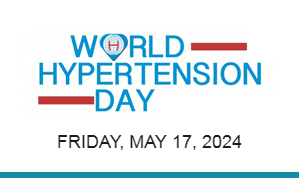June 16, 2007 – Milan, Italy – A population sample of adolescents with a high prevalence of obesity showed a high prevalence of the metabolic syndrome (MetSyn), and further that this was associated with modification of left ventricular (LV) geometry and function, characterized by a higher LV mass and a mild reduction in systolic and diastolic function. The prevalence of left ventricular hypertrophy (LVH) was 3-fold higher in adolescents with MetSyn. These results of the fourth examination of the Strong Heart Study (conducted 2001-2003) were reported by Prof. M. Chinali, Federico II University Hospital, Naples, Italy, at the 17th European Meeting on Hypertension, held in Milan from June 15-19, 2007.
Although a high prevalence of MetSyn, as diagnosed by modified ATP III criteria, in children and adolescents in the United States, there are no data regarding the effects on the cardiac phenotype. The Strong Heart Study is a population-based survey of the prevalence of cardiovascular (CV) risk factors and the incidence of morbidity and mortality in 4,549 Native Americans in three US states.
The 460 adolescents without diabetes who comprised this analysis were 14-20 years old (mean age 17 years), 238 are women, and BMI was 28.8 mg/m2. Doppler echocardiography was performed in 450 subjects, and clinical evaluation and laboratory testing in all subjects. Sex- and age-specific values were used to define obesity and hypertension.
MetSyn was identified in 131 (29%) adolescents, and 59% were obese. Notably, 40 (31%) of the subjects without MetSyn were obese. Significant findings in the MetSyn adolescents include they are older (17.6 years vs 17.2 years old), more women, more hypertension (15.1% vs 2.2% without MetSyn; 117/75 mmHg MetSyn, 111/65 mmHg without MetSyn), higher BMI (36 vs 25 kg/m2), and an unfavorable metabolic profile (higher glucose, higher insulin, higher total cholesterol, lower HDL-cholesterol).
On multivariate analysis, the adolescents with MetSyn had a significantly larger aortic root (3.01cv vs 3.73 cm without MetSyn) and left atrial diameter (3.31 cm vs 3.72 cm without MetSyn; p<0.01 for both).
Regarding geometric changes, the adolescents with MetSyn had a slightly greater LV diameter (5.34 cm vs 5.24 cm, p<0.01), slightly greater relative wall thickness (0.29 vs 0.27, p<0.01), higher LV mass (156.9 g vs 133.1 g, p<0.001). A markedly higher 39.8% prevalence of LVH was found with MetSyn compared to 12.8% in subjects without MetSyn (p<0.001). LVH was defined using sex-specific values from a reference group of 92 adolescents in the same population.
Regarding functional changes, mild systolic and diastolic dysfunction. Midwall shortening was reduced with MetSyn (18.3% vs 18.9% without MetSyn). Mitral E/A ratio was lower (1.70 vs 1.84 without MetSyn) and mitral E deceleration time was prolonged (219 msec vs 203 msec).
Notably, a post-hoc analysis in the 186 subjects who were not obese and did not have hypertension showed that 17% had MetSyn, and a 3-fold higher prevalence of LVH.





